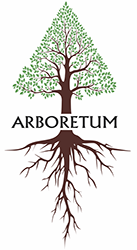Common Hackberry
Common Hackberry (Celtis Occidentalis) – is fast-growing, flowering, deciduous tree of the first level, high degree of drought and frost resistance. It is used in steppe afforestation and urban landscaping, forest reclamation of agricultural lands and contaminated areas.
Mature trees can reach a height of 45 m, although on average their height ranges from 25-35 m. The natural area of the Common Hackberry is the Northeast of the United States of America. It is also known as nettletree, sugarberry, beaverwood, northern hackberry, and American Hackberry. According to taxonomy, it belongs to the Cannabaceae family. In its appearance, texture and properties of wood, the Hackberry is very similar to the Elm, to the family of which it was previously attributed. It is also called the "Iron Tree" for the hardness of the wood.
The decorativeness of the Hackberry is expressed through the shape of the crown, its green-yellow color, asymmetry of leaves, texture of the bark, multi-colored cherry-like berries that can persist on the branches for several months after the leaves fall.
The Hackberry is especially appreciated for its unpretentiousness, rapid growth, even in drought conditions, as well as for the business qualities of wood. Furniture, souvenirs, various crafts are made from it, and it is used in construction.
The Hackberry is used in steppe forestry, even on the poorest soils, to create windbreak forest belts. This also applies to watersheds, to strengthen the slopes of ravines, in poisoned and contaminated areas ... The Hackberry also feels great in an urban environment, easily withstands gas pollution of industrial enterprises and cars, is used in park-landscape and alley gardening.
The Hackberry does not tolerate high standing water, wetlands. Withstands semi-shade, although prefers good light and regular watering. The average lifespan of the Hackberry is 70-100 years.
The Hackberry is an early honey plant, albeit with a small release of nectar. Its berries are edible, they can be eaten, although they do not deserve great value for themselves. Birds love them more. For some of them, Hackberry berries are an important link in the winter food chain.
The USDA climate zone 4B is native to the Common Hackberry, with the possibility of growing up to zone 3A, using various methods of introduction. Propagated by seeds. There are over 70 members of the Celtis family, some of which have additional variations.


